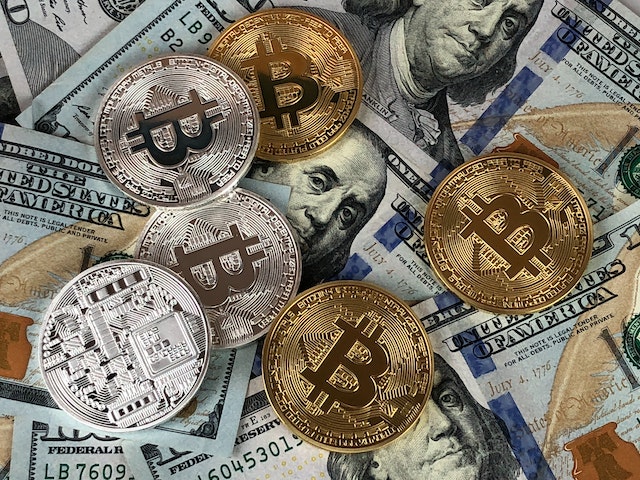My foray into the cryptocurrency space was marred by cryptic (see what I did there (;) words and jargon that can be quite off-putting to an average joe like myself. To give you the best intro to the space, I will use a series of questions that I had myself and proceed to draw parallels with systems you are already familiar with.
Before we jump into the crypto bandwagon, it helps to build some historical context and precedents that lead up to this new paradigm. Throughout human history, we have used different mediums of exchange to trade with each other. From the barter system, cowrie shells, to state-issued coins made of precious metals like gold and silver.
Paper currency as we know it was first introduced in the 1600s and gained widespread popularity across the world. Modern currency now takes the form of coins, paper currency, credit cards, and digital wallets like Paypal. All these are controlled by governments, central banks, and other financial institutions. It is therefore fair to say the current financial system is highly centralised.
Across all these systems, one thing that stands out is the fact that all mediums of exchange were based on consensus. As long as both parties to a transaction agree that the medium is acceptable, then it becomes a medium of exchange. This is the premise behind cryptocurrencies and where they derive their value and utility.
What is a cryptocurrency?
If you have not come across the word crypto or at least bitcoin, I think it’s fair to assume you’ve been living under a rock. As much as it tempts me to recruit you to my not-a-ponzi-scheme, I’ll hold off till the end of this blog. Hopefully, by then you’ll know enough about crypto to at least consider buying my token, which is totally going to the moon.
Think of cryptocurrency as a virtual currency that is meant to be used as a medium of exchange. It is similar to other ‘traditional’ forms of currency except for the fact that it is virtual and is not issued or controlled by a central authority. The word cryptocurrency can be quite a mouthful, so many people opt for its short form, crypto.
Bitcoin is perhaps the most widely known crypto and rightfully so. This is because bitcoin was the first ever crypto, introduced in 2009 by its pseudonymous founder, Satoshi Nakamoto. All other non-bitcoin cryptocurrencies are collectively referred to as altcoins, short for alternative coins. These include Ethereum, Litecoin, Cardano, and Avalanche, among others. To give you an impression of how vast the space is, there are currently over 10,000 cryptocurrencies in existence.
Why Crypto?
You’re probably asking yourself, why do I need this thing called crypto? I can seamlessly transact online using digital banking or the plethora of digital payment providers like Paypal. Well, it’s the same way people could not imagine needing a car, especially as their horse-drawn carriages worked perfectly fine. 100 years later, it’s clear why motor vehicles stand out as a means of transport.
At the risk of insulting your horse-drawn carriage, I’m here to shed some light on the unique features that cryptocurrencies boast, which make them stand out.
- Decentralisation
In traditional finance, or TradFi as crypto natives call it, banks and other intermediaries keep records of transactions. As a user you can only access your transaction history upon request. When it comes to crypto, transactions such as buying, selling, and transferring are tracked, recorded and organised on a public ledger. This public ledger is what is called a blockchain. By utilising blockchain technology, crypto serves as both a currency and an accounting system. - Immutability and Security
In the traditional financial system, banks and other central authorities have full access to transaction records. We often hear of cases of hacking where such records are compromised and attackers make away with depositors’ funds. With crypto, once a transaction has been recorded on the blockchain, it cannot be changed or edited. Although it isn’t impossible to change the transaction ledger, cryptographic security makes it extremely difficult. - Trustless
The traditional financial system requires you to trust the intermediaries to have your best interests at heart, sadly this is not always the case. Crypto on the other hand is completely trustless, enabling complete strangers to transact while ensuring each party meets their obligations to the other. The fact that transaction records are recorded on an open public ledger allows for full accountability and transparency. - Accessibility
Unlike TradFi which is marred with red tape that often keeps certain people from accessing quality financial services, crypto is different. All you need to transact is an internet connection and a smartphone. You can seamlessly send and receive crypto from anyone, anywhere on the globe. This explains why the crypto adoption rate in Sub-Saharan Africa is among the highest in the world. People who could previously not access financial services are able to through crypto.
How do I buy crypto?

I know, I know… you probably know that guy who’s always going on about how crypto will replace fiat. As much as this is a possibility, especially with the advent of government-issued digital currencies, it is not yet the case. You still need your good ‘ol fiat money to get your hands on the hottest dog-themed crypto.
Once you’ve spent some time in the crypto community, you’ll probably hear the word hodler being tossed around. Don’t fret, it is just a wordplay on the word ‘holder’ used to mean someone who owns some crypto and is not planning to sell. In my effort to convert you into a hodler, I’ll be taking you through the three main methods of acquiring crypto.
Another method you can use to acquire crypto is from other crypto owners. In the same way you can sell your old TV on an e-commerce platform like Amazon, there are numerous peer-to-peer crypto platforms where you can sell or buy crypto directly from other users.
Lastly, albeit not as common as the other two methods, you can buy crypto through Bitcoin ATMs. Just as you would withdraw money from your bank ATM, you can withdraw crypto directly to your wallet from a bitcoin ATM. All you need is to make a deposit in fiat currency, and you’ll get an equivalent of any crypto on offer, net of fees of course.
How do I store my crypto?

Unlike in traditional finance where banks hold custody of your money on your behalf, crypto has made it possible for you to be your own bank. By making use of crypto wallets, you can keep custody of your own crypto assets, in the same way you keep your paper money in your wallet. It is worth noting that crypto wallets do not store the actual crypto, they instead store keys to the crypto assets.
A crypto wallet comes with two sets of numbers and letters called a public key and a private key. Think of a public key as your bank account number, it enables you to send and receive crypto to your wallet. This public key is also referred to as your wallet address. On the other hand, your private key is like your banking password or pin. It enables you to access your account and transact with your crypto. Loss of your private key results in the loss of your crypto, it is essential to store your private keys carefully to prevent loss or unauthorised access.
There are two main types of wallets in which you can keep the keys to your crypto. The first type of wallet is called a hot wallet. Hot wallets allow you to easily transact online since they are connected to the internet. Think of hot wallets as an equivalent of a Paypal account. You can login on your computer or smartphone and seamlessly make and receive payments online. Cold wallets are another type of wallet. They store your private keys offline on a physical device that closely resembles a flash drive. Think of cold wallets as your actual fiat wallet, it is physical in nature and stores your crypto offline.
Parting shot… By now, you have an idea of what crypto is and how you can go about acquiring and storing some. It is worth noting that not all cryptocurrencies are built the same. They vary vastly in terms of total supply issued, mechanism used to validate the transactions, use cases and features. We will explore each of these concepts together in our subsequent blog posts.
I bet you’ve been looking forward to my pitch at the end of the blog as I promised. I have just had a quick look at local laws and it seems giving a recommendation would be considered investment advice. As you proceed further down this crypto rabbit hole, it is my hope that you come across that one crypto that will actually go to the moon.
One thing to always keep in mind when it comes to crypto, just as with any other venture involving money, always do your own research. It is no secret that the space has been marred by scams and Ponzi schemes. However, this does not negate the genuine utility that cryptocurrencies hold in finance and beyond. Feel free to use your diamond hands to peruse through our library and educate yourself.
Happy hodling! Kwaheri.


